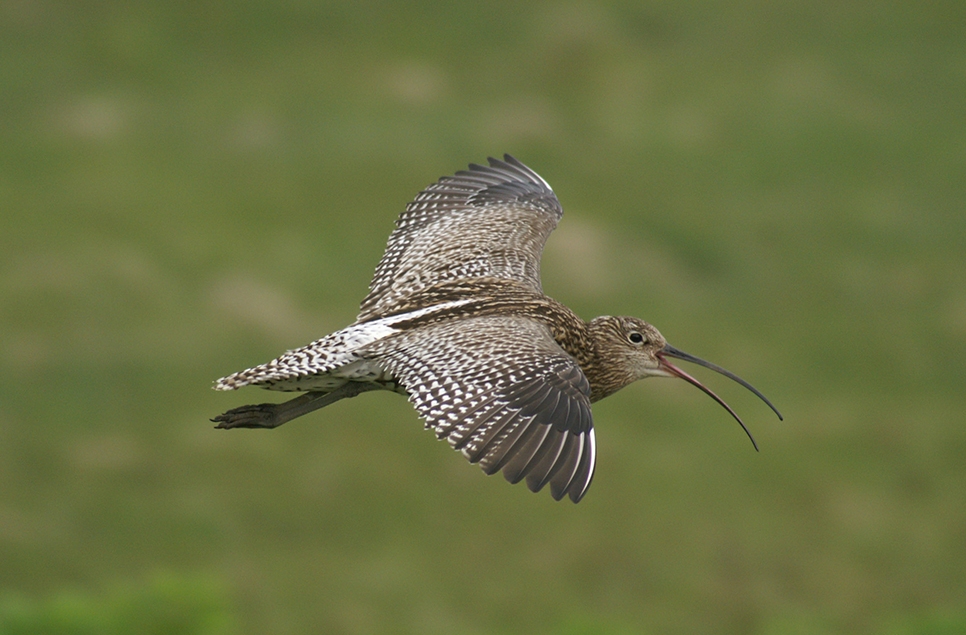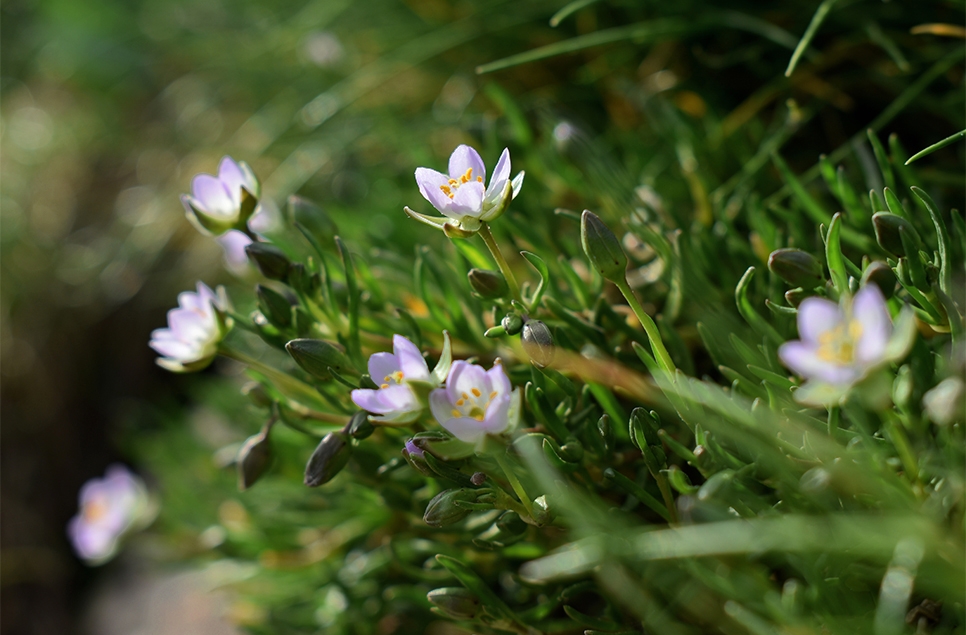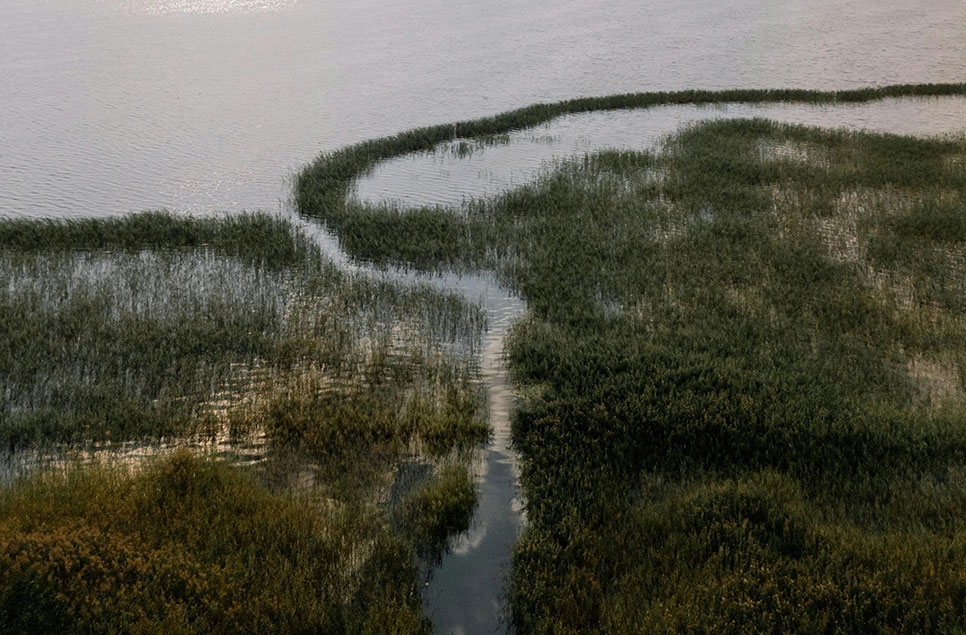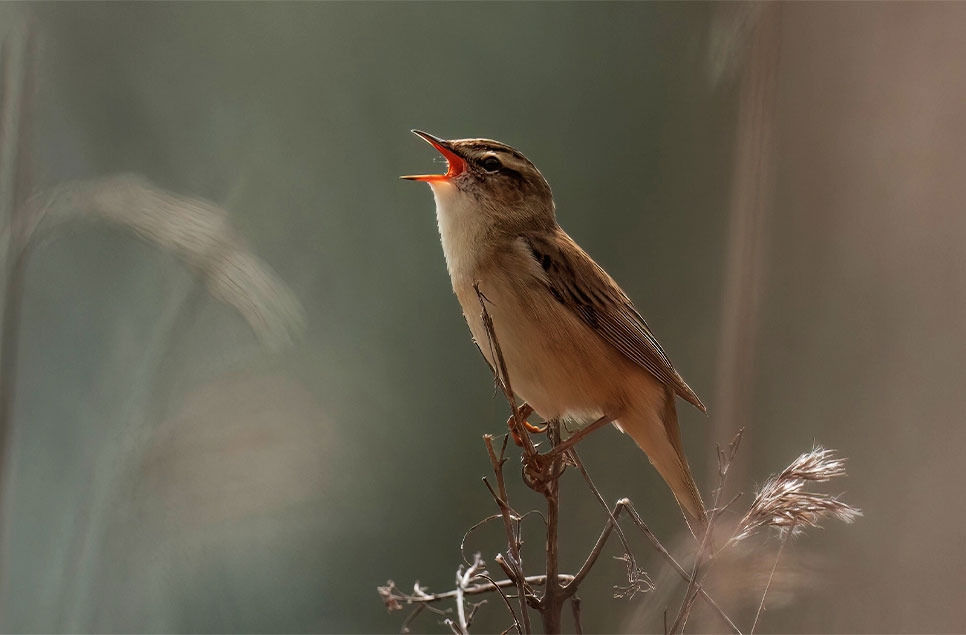Protecting biodiversity at WWT Steart Marshes
Life thrives in wetlands and by creating and managing habitats, we can improve an area's biodiversity. One of our shining examples of how we can do this on a grand scale is the Steart Marshes, a huge salt marsh reserve created in 2014.
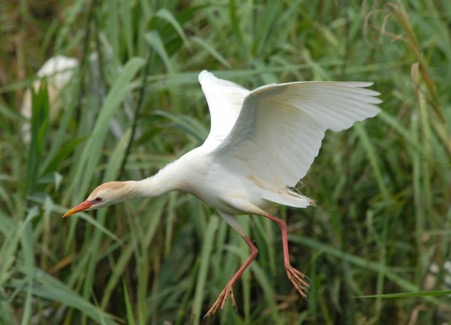
Biodiversity is… every single bit of life. From gene to cell to plant to fish to you to me.
And every single bit of life is very special. Because it carries with it the knowledge, learned over millions of years, of how best to survive in balance with our planet and with the other life forms that live here. It’s like every creature, from a tiny germ to a huge coral reef, is a library of books about how Earth works. Which is like a big safety net for when things get out of balance.
Unfortunately, that library is currently on fire. So it’s our responsibility, as the arsonists, to try and save what’s left and put the fires out!
Last year, a comprehensive global report revealed the catastrophic rate at which we are losing biodiversity. Wetlands are being lost at a speed three times faster than forests and this is driving the extinction of an unprecedented number of animals and plants, which will in turn have a knock on effect on the survival of other species. The more species we can save, the healthier the planet will be.
Biodiversity at WWT Steart Marshes
Life thrives in wetlands and by creating and managing habitats, we can attract and benefit wildlife. One of our shining examples of how we can do this on a grand scale is the Steart Marshes, created in 2014.
The hundreds of acres of salt marshes and freshwater wetlands protect people from flooding, they store tonnes of climate-causing carbon, and the rich mosaic of different habitats provides the perfect ingredients for a vast assortment of birds, plants and mammals to flourish across three main areas; the intertidal areas of Steart Marsh and Otterhampton Marsh and Stockland Marsh, a freshwater wetland habitat. All are connected via a network of ditches and water control structures and grazed by local farmers
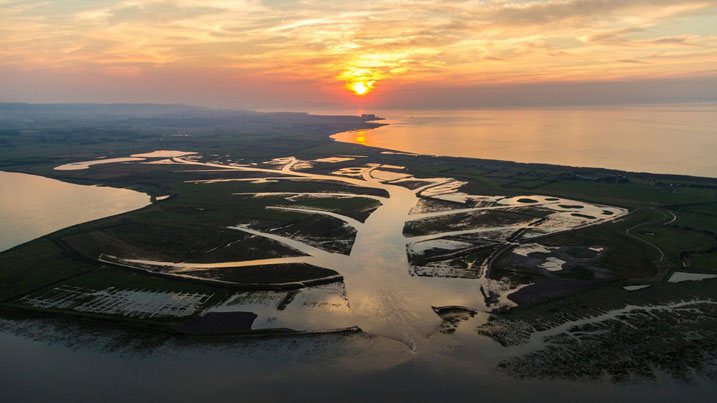
WWT have been awarded the magnificent sum of £550,000 from the players of People’s Postcode Lottery for 2020. Players have very generously supported our conservation work for the past six years.
Their funding allows us to carefully manage wetlands, which are home to 10% of the UK's species and thus a hotbed of nature. We look after wetlands because they are natural super systems that benefit and sustain an extraordinary level of biodiversity.
The Severn Estuary has the second highest tidal range in the world, at around 15m, and the vast expanses of mud exposed at low tide are rich in invertebrate life, in turn supporting large numbers of waders and wildfowl. During 2015 nearly 19,000 wintering birds of 49 species were recorded at Steart Marshes, with avocet, dunlin, little egret, shelduck and shoveler recorded in numbers of national importance. The site is of considerable value to the passage birds during the shoulder seasons, with wheatear, whimbrel, greenshank and ruff dropping by in notable numbers.
The reserve’s assortment of hedges, reed beds and arable fields also provide important refuge areas for species such as whinchat, linnet and goldfinch; while breeding birds include skylark, Cetti’s and sedge warblers and waders such as little ringed plover.
In addition the site supports a number of mammal species including the otter, water vole, badger and roe deer, as well as a total of nine bat species.
The reserve wardens at Steart are the reserve’s librarians, monitoring and documenting different species to track their needs. They’re also responsible for helping to shape and manage the reserve so that it suits the needs of the myriad wildlife that depends on it.
We spoke to three reserve wardens at Steart to share their experience of managing the marshes and what they’ve learned about the key wildlife they work with.
Since Steart was created, we’ve discovered 21 dragonfly species, including species new to the area such as a scarce chaser and a variable damselfly. They’ve never been seen that far west before.
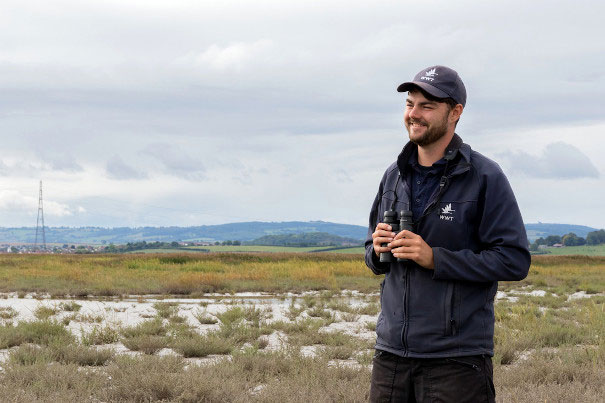
From a very young age my dad used to take me out bird watching. I had a really cheap pair of binoculars and we used to go out on the point here. Natural England have a reserve on the end which has been here since before I was born and they’ve got a big tower hide which my dad used to take me to in the winter to watch the flocks of dunlin on the river. This was way before this place was ever thought of.
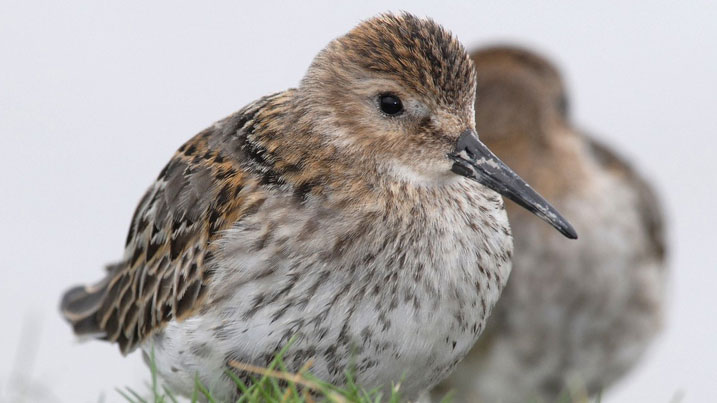
Before Steart was created, the site was just farmland. It’s incredible to see it go from that to this. I’ve known this area my entire life. My dad helps organise local Wetland Bird Surveys.
It’s only natural given my upbringing that my main interest is birds. The biggest change I’ve observed is the number of breeding birds in the summer and an increase in the wintering birds that use the site. I think generally those birds were around the area in the first place, they’re just starting to use the site more, as the site has developed.
The number of breeding birds at Steart has increased. The numbers of avocet have shot up from zero to almost thirty pairs last summer – pretty amazing really.
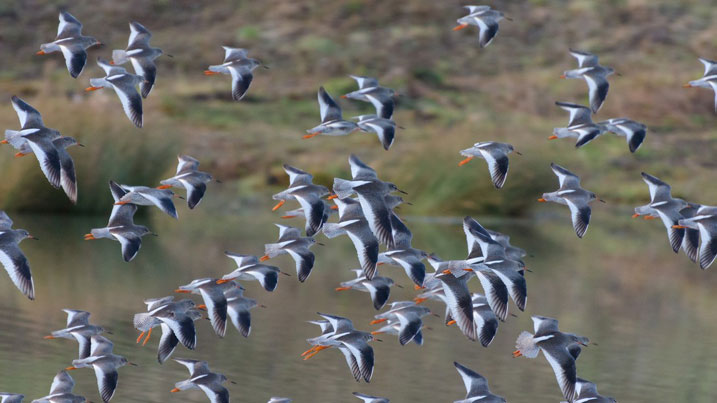
Shelducks bred for the first time at Steart in 2018 and then they bred again here last year, so that’s two years running we’ve had one pair, that’s a nice little bonus. It’s great having shelducklings bobbing about for people to come and see. It’s quite a big attraction.
We had avocet chicks running everywhere last year. People like to come out with their scopes and if there’s a warden about we can show people. Visitors love it.
The dunlin murmurations in the river are also popular. They’re are as impressive as starlings, they just don’t have the numbers. They come in off the bay right over your head. It’s quite a sight. They glint as they turn in the sun which reflects off the tide.
There has always been a good population of 10,000 – 15,000 dunlin out in Bridgewater Bay. However as this site has changed, there are now places for them to come feed and roost on the high tides. They’ll now come into the wetlands such as the Otterhampton Marshes, not necessarily in the same numbers, but at least 3000 or 4000 will come in on the bigger tides and roost on the mud flats.
You can pretty much guarantee what you’re going to see down here if you pick the right tide.
Generally a normal day will start with practical tasks like digging a drainage ditch to sort out flooding on paths to monitoring work, monitoring butterflies, dragonflies and birds. I do have set days during the winter to bird watch by myself. I’ll take an entire day to cover the whole of the site on my bike. It usually takes me about five hours. Working at WWT has taught me the practical stuff though, like how to handle a chainsaw.
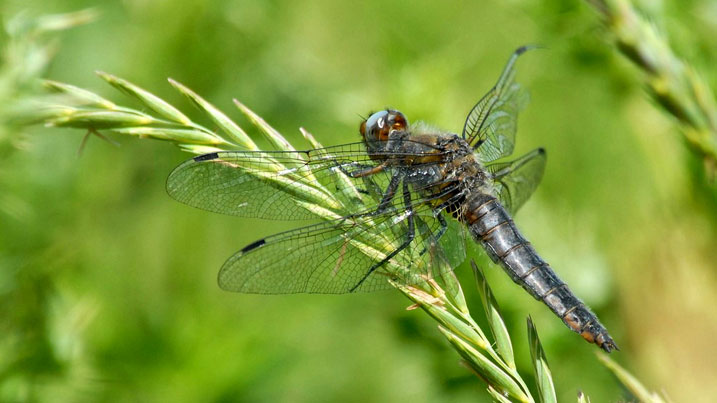
Since Steart was created, we’ve discovered 21 dragonfly species, including species new to the area such as a scarce chaser and a variable damselfly. They’ve never been seen that far west before. The British Dragonfly Society have been out here to conduct dragonfly surveys and teach us how to carry them out ourselves. Last summer, I discovered the variable damselfly and took a picture of it that I sent off to them for identification. It was pretty exciting. This year it will be down to me and some of the volunteers to carry out the surveys this summer from May through to September.
My favourite part of the job is being outside and monitoring the animals. I also love being out with the volunteers – they’re a sociable lot and they help me with snipe counts in the winter. Snipe are important to monitor because it’s a good indicator of how well the salt marshes are doing but they are also in decline in the UK so it’s important to keep track of them. I’ve noticed their numbers going down here, but that’s not necessarily down to do the habitat as it’s improving here every year for them. It’s more likely down to large populations not moving on from the continent.
At the moment, my favourite wetland bird is a bearded tit because I’ve seen one a few times and you don’t often get to see them here. It changes month to month though. You find bearded tits on reed beds. One’s been here for about a week and a half – a long time.
As the saltmarsh has developed, a few of the lagoons have silted up so after breeding season this year, we will deepen them out again so they can fill up naturally with water when the tide comes in, providing permanent water pools out there which will attract more birds in the winter. Before they got washed out, we used to have avocets coming in off the river and in the last couple of years that hasn’t happened because they’ve silted up. We need to get the big equipment out. It’s thanks to the support from our funders such as the players of People’s Postcode Lottery that we have the tools to help shape and manage the wetlands to make it a comfortable destination for our birds.
There have been a lot of funny situations, where we get stuck in mud, usually involving vehicles or ourselves. A couple of years ago one of our volunteers got one of our gators – a little buggy – stuck in the salt marsh, about 4.30pm, so we decided to go get our little tractor to go and pull it out, then our tractor got stuck quite badly. So then we had to go get a local farmer to come out with an even bigger tractor to pull all our stuff out. There was just a trail of vehicles stuck out on the saltmarsh. We didn’t manage to free everything until 7pm in the evening. Fortunately the tide wasn’t coming in. There are plenty of these stories – like getting stuck in waders and having to climb out of them and pull them out afterwards. We are always prepared though – we always have throw lines and the correct equipment to deal with the conditions.
I like that we’re doing something new in terms of the development of habitats. So much of conservation is trying to keep things the same, hold things steady, doing things that have been done, whilst at Steart, we are really open to trying things out.
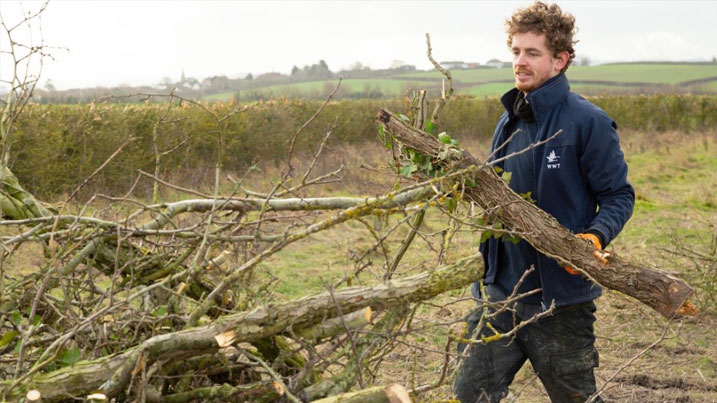
Wherever I go there are people interested in birds and small mammals so although I’m an all-rounder, if you know a little bit about plants you’re the ‘plant guy’.
Every day I focus on land management which in itself is very variable. It can involve anything from strimming, driving a tractor, chainsaw work or putting on a talk.
So much of the site gets taken over by reeds so for visibility and to see water you have to cut stuff back.
I do plant monitoring as we’ve recently started over-seeding in a few areas to try encourage more wild flowers to come through, so I’ve been surveying these areas to see what is there as a base point to see how it improves, if it’s successful.
Personally I love plants for plants sake but birders would point out that you need plants for nesting sites, cover for animals and food. I think they’re under-appreciated.
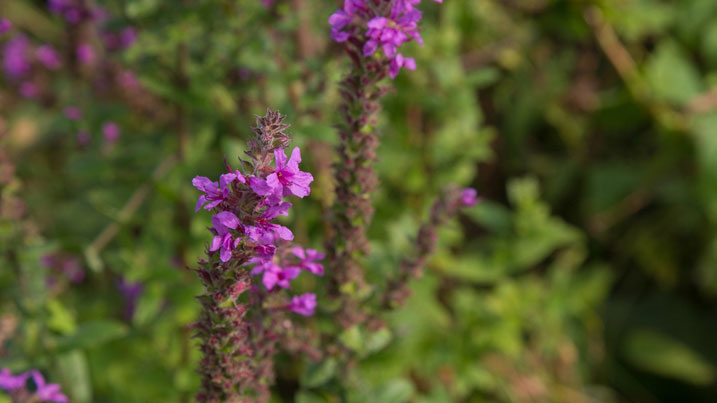
One of my favourite wetland plants is purple loosestrife. It’s pretty interesting. It has three different sexes. The flowers are different to stop it breeding with itself, meaning there is greater generic diversity leading to healthier, stronger plants. Darwin was interested in purple loosestrife and studied the plant.
I love the variability of the role, I have no idea what I’m going to be doing when I come in, working with volunteers, cutting back trees, whatever the site needs. I like the outdoors. I don’t do very well in an office environment.
I like that we’re doing something new in terms of the development of habitats. So much of conservation is trying to keep things the same, hold things steady, doing things that have been done, whilst at Steart, we are really open to trying things out which I really appreciate. I’m not used to being able to come up with an idea and the boss saying: “Yeah let’s give that a go!” I’m used to: “No we don’t do that – we’ve never done that.” Support from the players of People’s Postcode Lottery help us continue to think outside box and finance these projects to increase the diversity of plants and other species at Steart.
Hopefully in the long run, with our cutting and clearing of vegetation, we will decrease fertility and we’ll see a greater range of plants. That’s my hope. Basically reducing robust, fertile-loving plants, so some other stuff can come through.
The widespread use of fertilisers across the UK really worries me. It affects our wetlands, running off the land into the water. It causes eutrophication. Rotting plant life removes the oxygen from the water killing everything in it.
I grew up in the Mendips which weren’t as intensively managed and when you see it in the summer, there are so many different flowers compared to other areas which are over managed.
We have some great farmers around here that are interested in conservation and some of the older methods of farming.
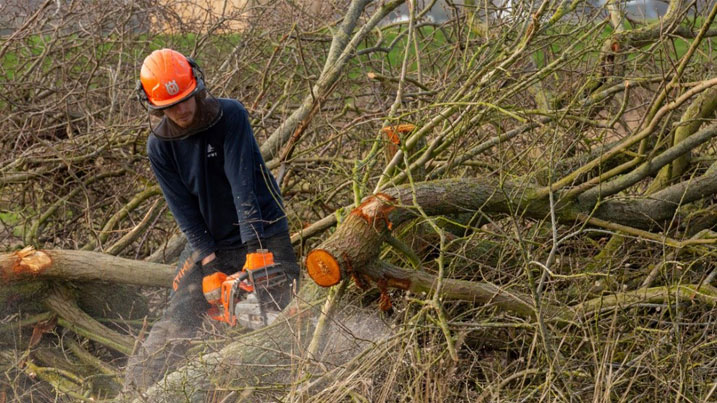
People would be surprised by how much land management is cutting it, removing it. It comes across as destructive – but what we actually are doing is creating habitat for multiple different species of animals and plants to survive. We’re giving them a helping hand.
I like to see what’s going on around the site. It’s nice to see your hard work being appreciated by the animals!
With small mammals, they like areas we’ve left alone that we call natural re-gen (regeneration) areas. To a lot of people it just looks like long, rank grass that keeps falling over and dying but actually it provides a really good habitat for them.
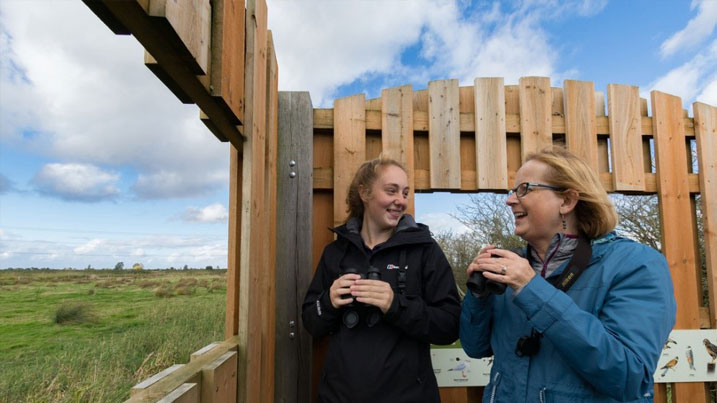
Alice Beaney (21) has been involved with Steart since 2017. In November 2017 she was appointed as Assistant Warden. As well as getting stuck into all the practical duties across the marshes, she runs surveys on small mammals at Steart.
One of the biggest surveys I’m involved with is for water voles and we look for signs in the ditches around the reserve. Although I’ve only been doing the survey for a couple of years, I’ve had to back enter a lot of the previous data onto maps and onto the data base so I can see that the population has spread out to the majority of ditches around the site as well as using the few remaining ditches that are in the salt marsh area which pre-date the reserve. That’s interesting for me as it means that they are using the whole reserve.
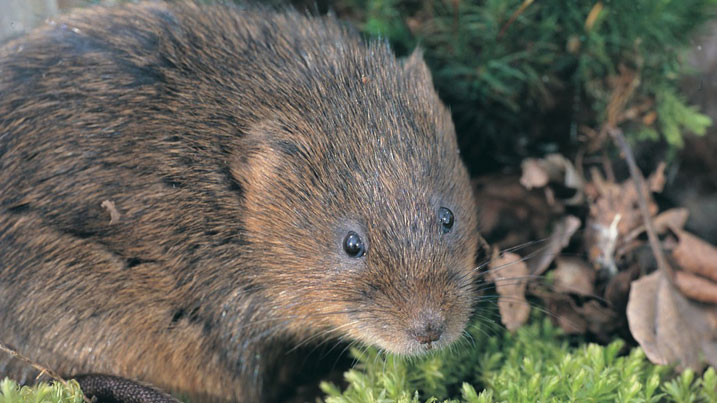
Water voles are doing really well. As the population has dispersed, this could mean numbers have increased. In some areas around the country, water vole numbers have massively declined and in some places they are reintroducing them to try spark a recovery. The fact that they are still doing so well despite what some would say is a disturbance to their original habitat is great. They are loving it out here.
Water voles mostly feed on plants such as rushes and reeds. In the salt marsh ditches they seem to like sea aster leaves.
If I had to pick a favourite mammal on the reserve, I would pick the otter. I have never seen one but I have taken part in some of the surveys and we have them on camera traps so we’ve got videos and photos of them – I’ve just never seen one in real life in the wild, but they are amazing. Even their spraint smells really sweet! As well as being very cute, they use the habitat very well. They are very diverse and we’ve found signs of them spanning the whole reserve so they use freshwater and the salt water areas and they feed on lots of different things.
Badgers are also using the salt marsh. With small mammals, they like areas we’ve left alone that we call natural re-gen (regeneration) areas. To a lot of people it just looks like long, rank grass that keeps falling over and dying but actually it provides a really good habitat for them.
For some small mammal species, it’s not that they’re particularly rare, it’s that they’re understudied. For species like the wood mouse, people assume they are there so don’t always bother surveying for them. I know we have lots of wood mouse here because I’ve surveyed and found them. We’ve also got harvest mice which are really lovely animals. I survey for their nests with some volunteers, which are found in grass and reed beds – high up the stems, so they are not affected by water levels. They are using the wetland habitat – just different bits of it.
I love being outdoors so that’s an important part of the role for me. It can be quite a physical job if you’re using heavy machinery or your digging but I also really enjoy the survey work when that comes around as well as the practical tasks. I enjoy all aspects of the job.
People tend to be surprised that there are people out here doing things, like cutting the grass, and maintaining the paths and hides. I think a lot of people don’t realise that there is a small team here working on the land. We’ll put on waders and wade out to some of the islands around the salt marsh to keep the vegetation lower to ensure they remain good habitats.
The thing that worries me most about my job is that we’re losing great habitat like this. They have so many benefits such as storing carbon and providing a home for animals and to be losing them when we’re trying to fight climate change and biodiversity loss is heart-breaking. Funding from our supports like the players of People’s Postcode Lottery are thankfully helping us to create and maintain wetlands where we can. They are absolutely vital for wildlife and people.
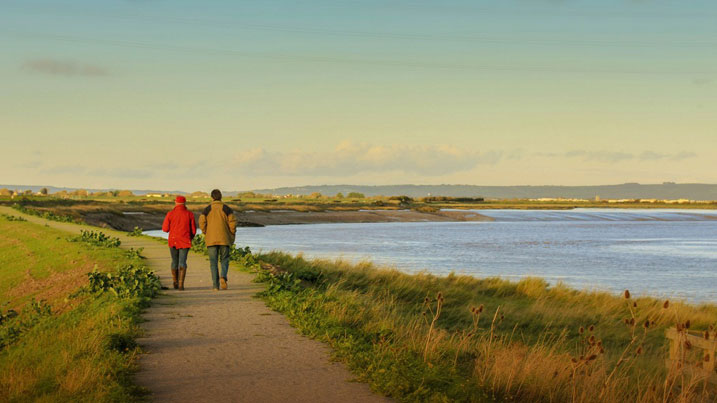
Working on the wetlands, we do see the effects of climate change such as unusual birds being blown off course or species arriving or leaving at different times because our seasons are not as definitive as they used to be. Everything is adjusting but habitat loss is one of our biggest threats.
The most invasive mammal I’m aware of for this habitat is the American mink and touch wood we have not got them here as our water vole population seems to be so healthy and we have never found mink scat. We have people surveying for them out here and again never found them. They decimate water vole populations very quickly so we would notice during our surveys if water voles suddenly vanished from a ditch.
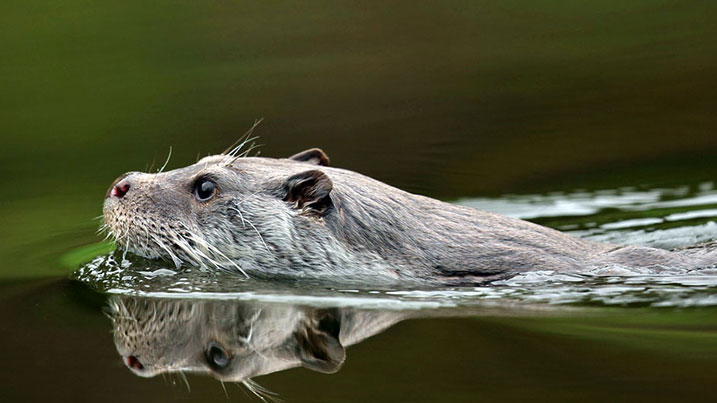
Otters are quite territorial so they tend to keep the mink away. Although I’m sure otters snack on the odd water vole they do have a much more diverse diet so they wouldn’t selectively pick on them. They are part of the ecosystem here.
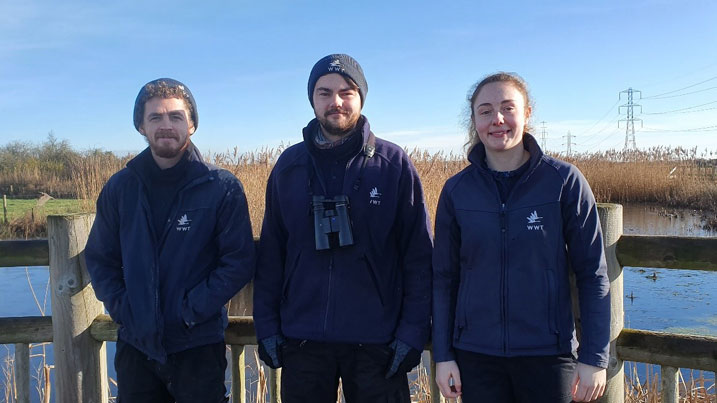
Reserved for nature
We create and maintain thousands of hectares of wetland habitat at our nature reserves, to support and protect biodiversity like the interconnected species and ecosystems that call Steart Marshes home.
Find out more